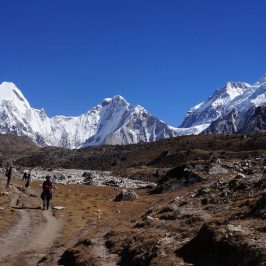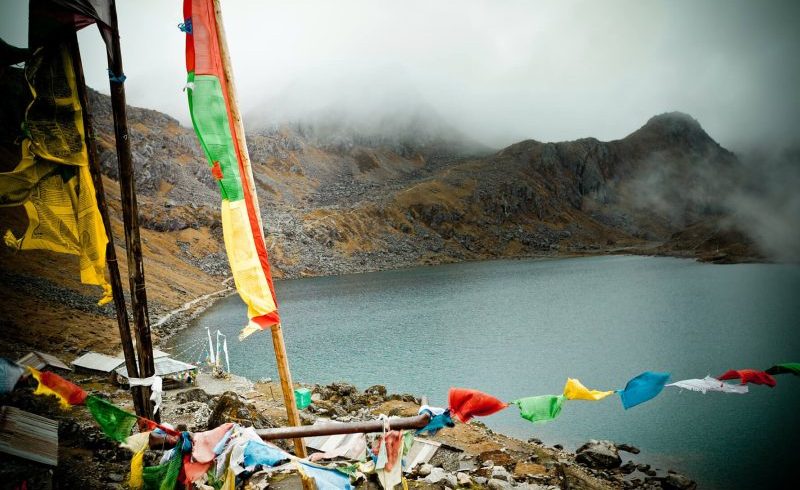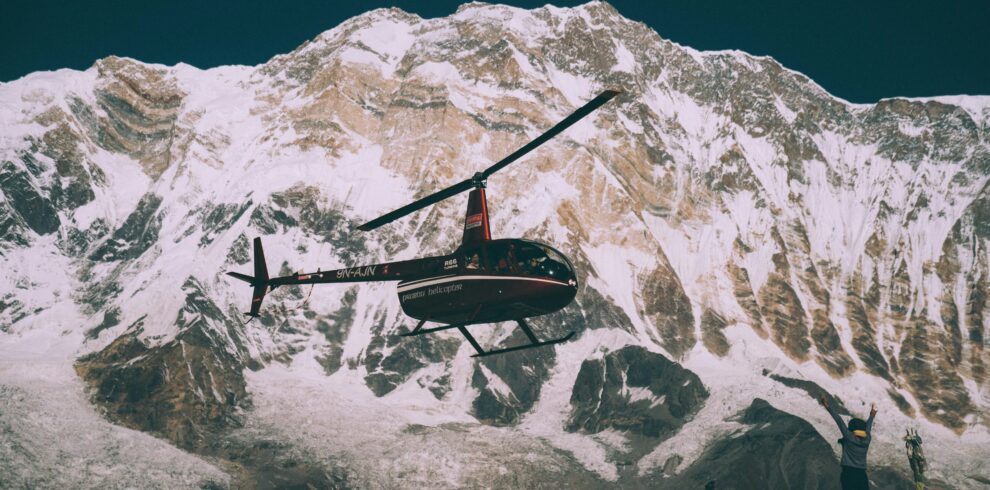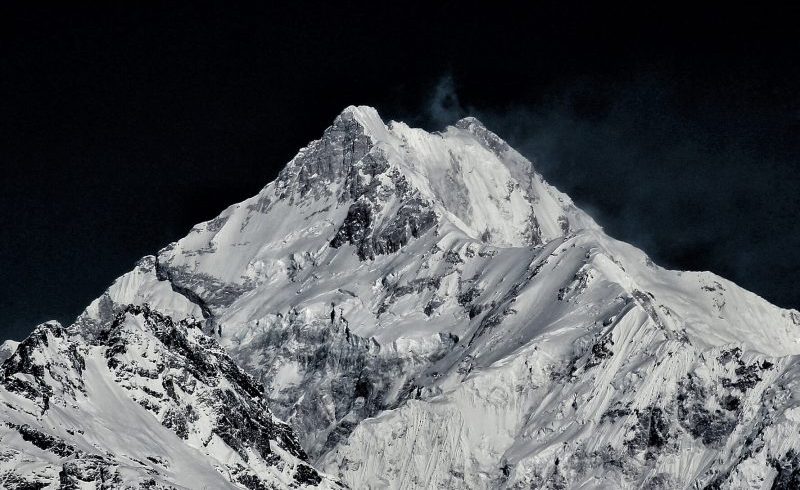Everest Base Camp Helicopter Trek blends the Everest Base Camp trek with a helicopter charter around Mount Everest, the world’s highest peak. This Everest Base Camp Helicopter Trek is for you if you have a tight schedule but want to go on an Everest expedition.
In just over a week, you’ll reach Everest’s base camp, witness the iconic Kala Patthar viewpoint, and immerse yourself in the rich culture of the Himalayan people. In just over a week, you’ll reach Everest’s base camp, witness the iconic Kala Patthar viewpoint, and immerse yourself in the rich culture of the Himalayan people.
After a leisurely helicopter flight from Kathmandu to Lukla, You’ll begin your journey from here, crossing swaying suspension bridges decorated with prayer flags, a lush jungle of pines, oaks rhododendron, ferns, and orchids as you pass the picturesque Dudh Koshi Valley.
Trek to Everest Base Camp and walk beneath Mount Everest, the world’s highest peak. Furthermore, you will hike to Kala Patthar, where you will be enveloped by an astonishing view of peaks ranging between 7000 and 8000 meters. Afterward, you will board a helicopter to relish an unmatched perspective of mountains, hills, and glacial rivers during a helicopter expedition to Everest Base Camp.
Your Everest Base Camp trek comes to an end with a helicopter ride to Lukla and then into Kathmandu.
Best Time to Travel & Weather Condition:
The ideal seasons for Everest Base Camp Helicopter Trek are spring (March to May) and fall (mid-September to November). During these seasons, the weather is dry and clear, making it perfect for trekking and basking in pristine mountain landscapes. The days are pleasant, while the evenings are cool. However, because these are peak seasons, the trails become crowded and busy.
The foothills are enchanting with wildflowers, especially rhododendron blossoms, in the spring. The Base Camp is transformed into a tented city during the climbing season, with climbers and Sherpa guides. Trekking to Everest Base Camp is extremely popular in the autumn, you may experience extremely clear sights during this season due to the ending of the heavy monsoon season, which clears the atmosphere.
Planning your journey for October offers the chance to attend Mani Rimdu, the Everest region’s most prominent festival. During this celebration, individuals from Tengboche, Chiwong, and Thame monasteries all come together to participate.
Helicopter Flight:
We will conduct all flight transfers by helicopter to save you time and energy, as well as to prevent the frustration of flight delays or cancellations. You’ll trek to Everest Base Camp, but instead of retreating by land, you will fly to Lukla in a helicopter. As you’ll soar relatively close to some of the world’s highest peaks and glaciers, helicopter rides may be the finest and most unforgettable aerial experience of your life.
On Day 2 of your journey, a 45-minute flight from Kathmandu to Lukla (2,840 m) takes you from the busy capital city to the world’s highest trekking destination, the Everest Region. Tenzing-Hillary Airport, one of the world’s highest and most extreme airports, welcomes you. The airport is perched atop a cliff on a small plateau. The weather here is unpredictable and changes regularly since it is surrounded by some of the world’s tallest peaks. It would be clear and sunny one minute, then clouds would appear and everything would become foggy the next.
Flights are only permitted when the weather is clear and visibility is excellent.
On Day 10, you descend to Gorak Shep and board a helicopter after your trek to Kala Patthar. We will fly you to Lukla for a short break before proceeding to Kathmandu.
Entry Permits & Requirements:
The Everest Base Camp Helicopter Trek requires two permits:
1) Sagarmatha National Park Entry Permit and
2) Khumbu Rural Municipality Entrance Permit.
Unlike many Nepal Himalaya climbs, you won’t require a TIMS (Tourist Information Management System) card for this one.
The Nepal Tourism Board’s office in Kathmandu or the park’s entrance gate in Monjo can provide you with Sagarmatha National Park Entry Permit for NRS 3000.
The fee for citizens of SAARC nations is NRS 1500.
To ensure a smooth process, it is essential that you fill out the permit application and provide either your passport or a copy of it. Upon your arrival in Lukla, it is imperative that you are present to acquire the Khumbu Pasang Lhamu Rural Municipality Entrance Permit. This permit, priced at NRS 2000, can be easily obtained at the rural municipality counter situated on the outskirts of the settlement. There’s no need to be concerned about permit wait times, as the company or our guides will handle all the necessary arrangements seamlessly.
Travel Insurance:
All clients participating in any activity must have travel insurance. The insurance plan will provide coverage for personal injury, death, hospital expenditures, and repatriation fees. Additionally, it includes provisions for helicopter rescue and any other disease that is specifically mentioned in the plan. We strongly recommend that you obtain a comprehensive insurance plan from a reputable insurance company.
Passport and Visa:
Every client must have a valid passport from the return date with a 6 months prior validity by the Nepalese consulate in your country or immigration office at Tribhuvan International Airport in Kathmandu.
Equipment lists
- Find the guidelines regarding essential trekking gears.
- Daypack above 40 liters. (Must be waterproof)
- Down jacket (rental available)
- Warm sleeping bag (rental available)
- Sun head, gulf cap, sunglasses, headlamp, and torchlight.
- Ear-muffs, sun Lotions/sun cream.
- One pair of liner gloves is thin wool and synthetic.
- Cotton t-shirts, Synthetic t-shirt.
- Two Long sleeve polyester or synthetic lightweight for sunny days.
- One Soft-shell jacket water & wind resist.
- One swimming dress.
- Inner clothes as your requirement.
- Liner socks, woolen socks.
- Proper trekking shoes.
- Imodium or Pepto Bismo capsules for upset stomach or diarrhea.
- Diamox for altitude sickness. The guide will help you to take it.
- One small personal-sized first-aid kit with blister treatments such as moleskin, bands, anti-infection ointments, muscle relief ointments.




